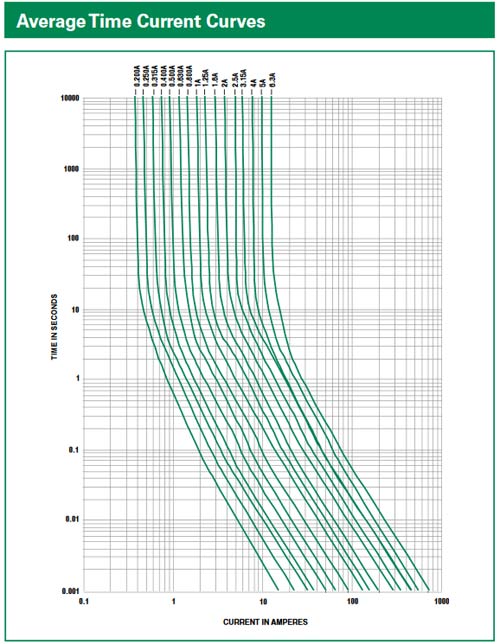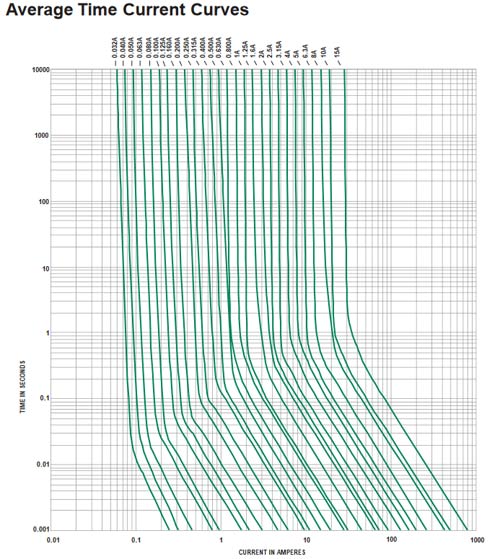Capable of supporting up to 32 GT/s without altering design
Choosing between Slow Blow and Fast Blow Fuse for Power Circuit Protection

Uncertainty is the truth of nature and there is no exception in electronics or electrical engineering. There are a lot of reasons that are responsible for the failures of a well-constructed circuit. Sometimes, the failure leads to a massive loss, sometimes it causes disastrous events.
The most common cause of a failed circuit or electrical event is a short circuit or over current situation. Not to mention, short circuit and overcurrent could lead to a fire or burned cases where lots of innocent lives, huge amounts of non-recoverable assets are destroyed in many past events throughout history without proper circuit protection.
The solution? Disconnecting the circuit from the power line during overcurrent or short circuit situations. The component? There are many possible ways to make this thing happen. Out of which, a fuse is a fastest and inexpensive way to do it.
But what does a fuse do? For simplicity, a fuse uses a wire or connection that gets burned and disconnects the circuit during an overcurrent situation. The wire or the connection is done in such a way that it requires specified current to pass through it for a specified duration of time. Therefore, if a fuse is rated for 1A, the current needs to cross the current limit of 1A to blow up the fuse but the overcurrent duration of time is dependent on what type of fuse it is. There are many types of fuse and we have already discussed them, among them, the slow blow fuse (a.k.a. time delay fuse) and fast-acting fuse (a.k.a fast blow fuse) are the most popular choice for electronic circuits like SMPS circuits or other power circuits. In this article, we will discuss Fast Blow Fuse vs Time Delay Fuse.
In general, the time required for a fuse to blow can be given I2t where I is the current, and t is the time. A slow blow fuse requires higher I2t than fast-blow fuses to blow up.
Slow Blow Fuse
Slow blow fuse requires much higher time than the Fast Acting one. But why does one require a delay in a fuse blowing up? This delay is to decrease the chances of false tripping. During startup, many circuits or components require very large current for a very short period. This time is very less. It is called a transient current. For example, high power SMPS uses a bulk filter capacitor across input that requires huge startup current for a short period, much larger than the average running current. The same thing happens for high power motor circuits because to start a motor, a huge startup current is required. The truth is that high startup current is not considered as a circuit-level fault, rather it is a normal circuit operation. But if the fuse has a very low I2t, the fuse will trip on the transient current and disconnect the circuit. This is the situation where the fuse requires a time delay. This is why a time delay fuse or slow blow fuse is used.
But this doesn't mean that the fuse will not protect the circuit during overcurrent or in short circuit situations. When a circuit gets shorted or the overcurrent situation happens due to some kind of circuit-level fault, it remains the same even after the I2t of the fuse exceeds, the fuse then disconnects the circuit from the source.
How to select a Slow Blow Fuse?
The below image is a slow blow fuse from LITTELFUSE with the following part number of 0213002.MXP.

The Time vs. Current Curve will show the slow blow or time delay feature of the fuse. The below image is showing the time vs. current curve of the above fuse. Each line representing different current ratings of the fuse.

As we can see, in the above graph, the high current tolerance is high when compared with the time in seconds. Using this graph and comparing it to the actual current value of our circuit, we can select the right type of fuse.
Fast Acting Fuses
As discussed before, this type of fuse acts very fast and if overcurrent occurred, it will instantly disconnect the circuit from the source. This type of fuse has very low I2t compared with slow blow fuse.
The majority of the application is in consumer or household equipment. Generally, different kinds of electrical or electronic circuits don't tolerate sudden current changes. In this situation, fast Acting is required to protect the source circuit from the load. Fast Acting fuse makes this thing happen instantly.
How to Select a Fast Acting fuse?
The below image is a Fast Acting fuse from LITTELFUSE with the following part number of 021706.3HXP.

The Time vs. current curve will show the fast Acting feature of the fuse. The below image is showing the time vs. current curve of the above fuse. Each line representing different current ratings of the fuse.

The above graph has a very fast current change rating when compared with the slow blow fuse. The time difference is very low.
Slow Blow Vs Fast Blow Fuse
Is it possible to replace a faulty slow blow fuse with a Fast Acting fuse or vice versa? The answer is NO. Because two fuses have different properties and different applications.
These two fuses serve the same purpose that is disconnecting the circuit during overcurrent or short circuit situations but these two fuses serve this same purpose using different methods. Slow Blow Fuse disconnects the circuit only when the overcurrent situation continues to stay in the supply line. Therefore, it is not an instantaneous job. But the major difference is a Fast Acting fuse will immediately disconnect the circuit as soon as the overcurrent is detected. For the Fast Acting fuse, it is an instant job.
Thus, whenever a circuit is using a slow blow fuse, that means, the circuit may have the inrush or transient startup current which needs to be considered by the slow blow fuse. If the fuse is changed with a Fast Acting fuse, the fuse will blow during the startup of the circuit. The same thing is true for the Fast Acting fuse. If a circuit has a fast Acting fuse, it means the circuit does not tolerate any high transient current changes and needs to be immediately disconnected. Thus, changing a fast Acting fuse with a slow blow fuse will be vulnerable, as the circuit will not become immune to the high transient changes and could lead to a total failure in those situations.









